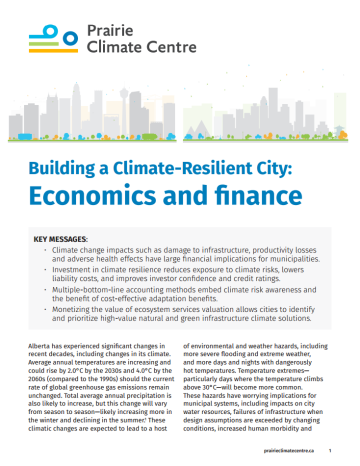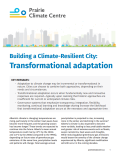
Alberta has experienced significant changes in recent decades, including changes in its climate. Average annual temperatures are increasing and could rise by 2.0°C by the 2030s and 4.0°C by the 2060s (compared to the 1990s) should the current rate of global greenhouse gas emissions remain unchanged. Total average annual precipitation is also likely to increase, but this change will vary from season to season—likely increasing more in the winter and declining in the summer. These climatic changes are expected to lead to a host of environmental and weather hazards, including more severe flooding and extreme weather, and more days and nights with dangerously hot temperatures. Temperature extremes — particularly days where the temperature climbs above 30°C — will become more common.
These hazards have worrying implications for municipal systems, including impacts on city water resources, failures of infrastructure when design assumptions are exceeded by changing conditions, increased human morbidity and Building a Climate-Resilient City: Economics and finance mortality, and increased severity and frequency of disaster-level events. Under a lower level of global greenhouse gas emissions, climatic changes will be less severe but still significant.




